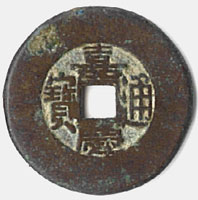
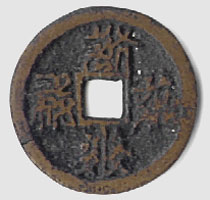
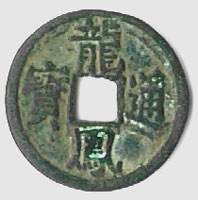
Three Examples of fakes.
Fakes |
Fakes are a great problem for numismatists, and this is especially true
in the case of Chinese coins.
Ordinary tourists who buy coins in China will almost certainly be cheated. The
dealers have many tricks. Even dealers who have plenty of good coins
will try to sell fakes if they sense that the buyer is inexperienced. Sometimes a dealer
has common genuine coins mixed with fakes, lying in the window. For the
inexperienced buyer, it can be very difficult to tell them apart.
If you buy coins via the internet, the coins on the internet pages might well be real, but the coins
that you receive can be fakes. Some dealers may even send you scanned images of
some fakes. If
you find out that this is the case, they will quickly send you scans of good coins
in the hope that you will
still buy some genuine coins.
There are fakes so poorly made that anybody can tell that they are not genuine,
sometimes the patina is
just painted on, but some fakes can be so well made that sometimes even experienced collectors
cannot tell for sure.
| It is very risky to buy coins from any
dealer who has not been recommended to you by an experienced collector! |
However, dealers in China are still much cheaper than in western countries, and there are actually some honest dealers.



Three Examples of fakes.
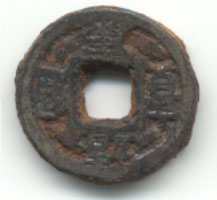
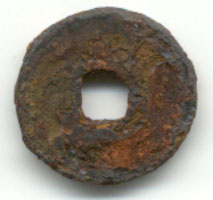
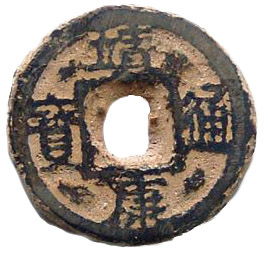
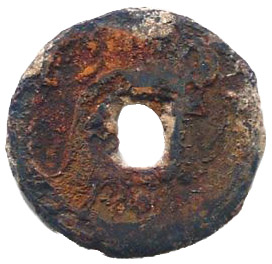
The four images above gives a good example of a genuine coin that
has been manipulated to look better. The bronze Ding Kang Tong Bao is a rare
coin. The iron coins are a little easier to find, but they are most often in
very bad condition. This Ding Kang Tong Bao iron coin has been filed on the
surface to reveal the characters that were probably unreadable before, and the
coin would have been almost worthless. After this treatment it has been given a
slight coating with sand and glue that makes the characters stand out. It washed
off easily and the first pictures shows how rough a treatment it has been given.